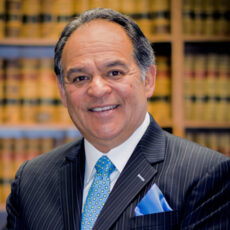Drowsy Driving Car Accidents in Yakima WA

Drowsy driving, also often referred to as “fatigued driving,” includes a range of driving behaviors, from drivers’ shutting their eyes for a split second to completely falling asleep behind the wheel. Even if a driver is awake but unable to devote his or her full attention to the road because of fatigue, then the driver is driving while drowsy, putting everyone else on the road at risk.
Although everyone likely understands that fatigued driving creates a risk, most people do not realize how prevalent drowsy driving is. The Centers for Disease Control and Prevention (CDC) recently completed the largest study to date on the issue of drowsy driving. The CDC study surveyed 147,076 drivers over the age of 18 from 19 states and the District of Columbia. Drivers were asked to respond to a set of questions regarding driving behaviors and insufficient sleep. A shocking 4.2 percent of the respondents admitted to falling asleep behind the wheel of a vehicle during the previous 30 days.
A previous study by the National Sleep Foundation found that a third of all respondents admitted to falling asleep while driving within the previous year. Another 60 percent indicated that they had driven while fatigued in the last year, and an alarming 4 percent admitted to having caused an accident, or almost caused an accident, as a result of drowsy driving.
Precise figures for the number of accidents where fatigued driving is a contributing factor are difficult to come by because state reporting practices vary widely and because drivers are often reluctant to admit that they fell asleep or nodded off just prior to a collision. The National Highway Traffic Safety Administration (NHTSA) estimates that fatigued driving is a contributing factor in over 100,000 collisions each year.
How Dangerous is Drowsy Driving?
Many people underestimate the dangers of driving while drowsy. Experts, however, tell us that fatigued driving can be as dangerous as drunk driving.
The AAA Foundation for Traffic Safety concluded in a study that a driver is twice as likely to be involved in a crash when the driver has fallen short of the optimal eight hours of sleep by just two hours. The risk of crashing increases four to five times when a driver has had less than six hours of sleep.
According to the findings in an Australian study, a driver who has been awake for 18 hours has an impairment level equal to that of a driver with a blood alcohol concentration of 0.05 percent. When a driver reaches the 24-hour mark without sleep, he or she has an impairment level equal to a driver with a BAC of 0.10, meaning the driver is operating a vehicle with an impairment level equal to someone who is legally drunk.
Not only does a fatigued driver run the risk of actually falling asleep behind the wheel, but evidence also suggest that drowsy drivers tend to exhibit other bad driving behaviors as well. A tired driver is more likely to be stressed and impatient and is more likely to drive faster and more aggressively. When all of these driving behaviors are combined, it becomes clear how dangerous a drowsy driver really is to others on the road.
Hurt By A Drowsy Driver? Call Our Yakima Car Accident Lawyers Today
If you have been involved in a Washington state car accident and you believe that fatigued driving played a role, contact the Yakima car accident attorneys at the Mariano Morales Law for a free initial consultation. Call us now at (509) 853-2222 or fill out our online contact form.



